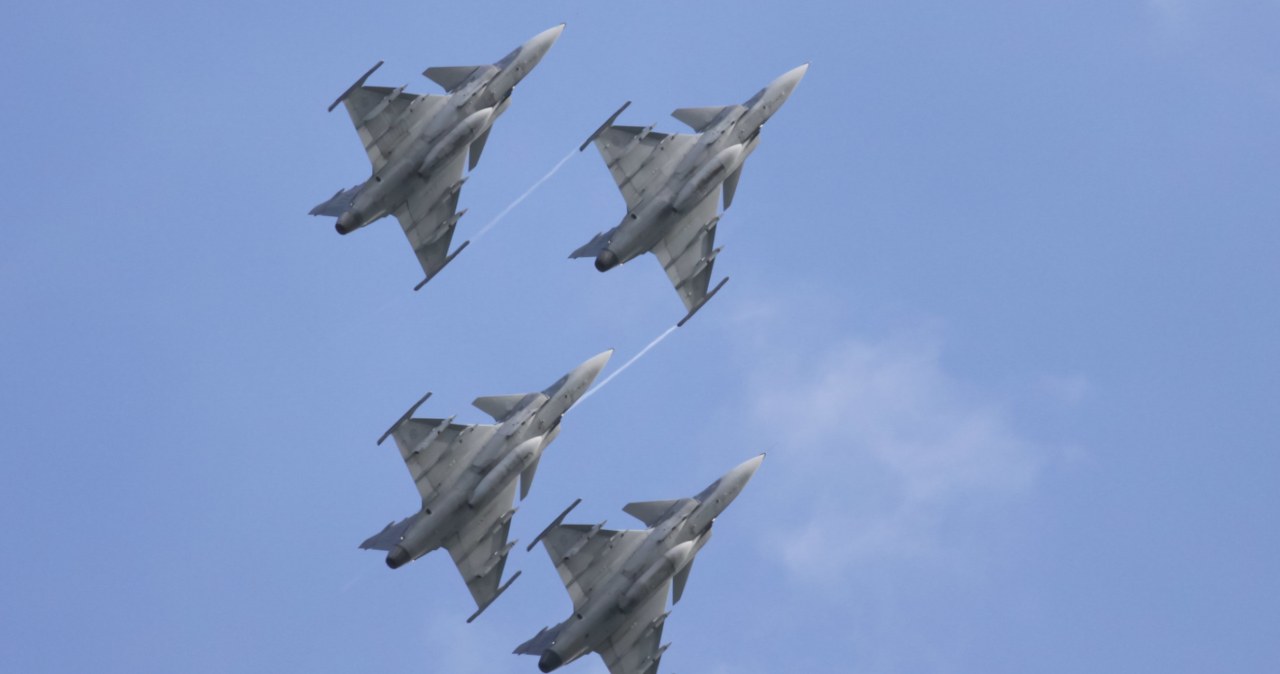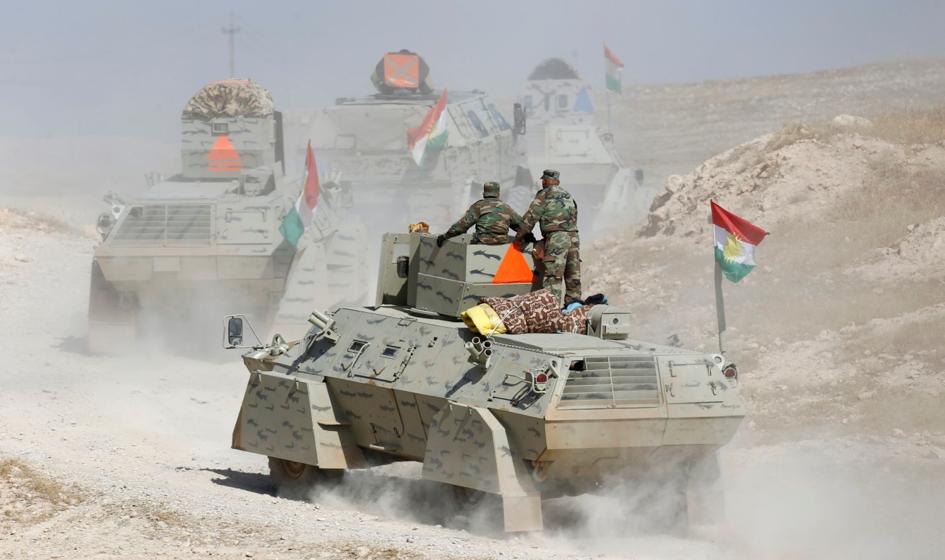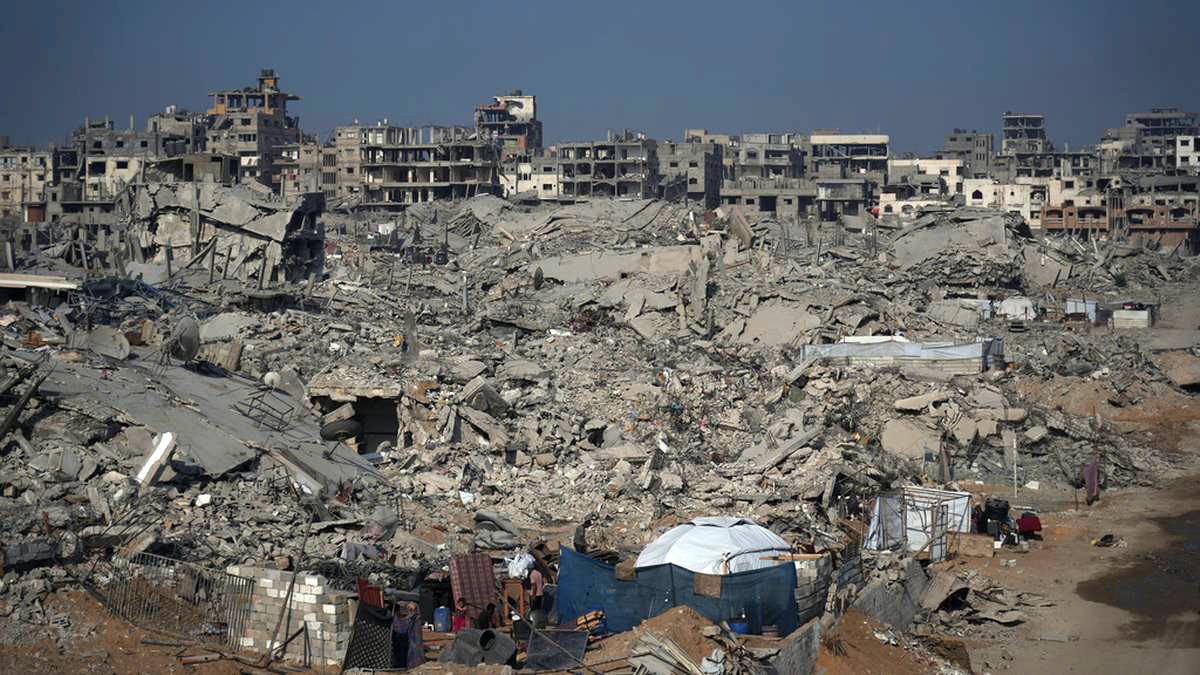Mutual attacks on border energy infrastructure. 1322nd Day of War


Ukrainian forces conducted a series of counterattacks in the Dynepropetrovsk Oblast, through which they regained at least partial control of the 2 towns – Sosniwka and Chorosz. However, this did not halt the Russians' attacks on the border of the circuits of Djepropetrovsk and Zaporoski, where they went, among others, to the rear of defenders in the recently recovered Sosniwiec.
Battles in confederate Pokrovskawhere according to any sources the aggressor reached the part of the M04 motorway moving through this city from Donetsk to Dniepr. The invaders were besides to regain their initiative north of the Pokrów agglomeration in the Dobropol area, where they drove the defenders out of parts of their positions recovered in erstwhile weeks.
Russian troops deepened Siewiersk and Lyman's wing. They occupied another towns south of the first and north of the second. According to any sources to the northwest of Lyman, they besides reached a railway line through him from Kramatorska to Kharkov.
Under Russian control passed the northern part of Kupansk, and according to any sources, the aggressor has already occupied its center and western part, flanking Ukrainian forces remaining north of the Kupujanka River (the Oskol tributary). The defenders were to begin to retreat any of the forces south to safe the crossing from the left side of the Oskol village of Kupjansk-Wuzłowa, which was the last way to supply the Ukrainian group on the alleged Zaoskol. The invaders crossed the Volcza River and proceed the attack in the southwest of Volczańsk. The full northern part of the city is under their control.

On October 5, the aggressor carried out a massive air strike, the main mark of which was Western Ukraine. According to the Lviv authorities, this was to be the biggest attack on the city from the beginning of full-scale aggression. According to the local air defence command, 163 air targets were destroyed in this area, including 23 manoeuvring missiles (totally the aggressor was to usage them that day 51, 38 of them were shot down). Lviv was partially cut off from power supplies. The largest local industrial facility was destroyed – the Sparrow Industrial Park, which according to any sources was utilized as a point of reception and distribution of military support reaching the country from Poland. Drohobych and Stryj were besides attacked. A full of 4 died in the Lviv region and 8 were injured. Enemy rockets and drones besides hit critical and industrial infrastructure in the Ivanofrankiy circuitry (according to any sources, the Bursztyńska Cieplna Power Plant was hit) and the Winniecki Power Plant was hit.
Russian forces intensified air strikes on energy infrastructure in the Chernihow, Sumi and Kharkiv circuits. As a consequence of attacks on substations and heat and power plants to blackout or partial power outage occurred, among others, in Chernihov (1, 2, 4 and 5 October), Kharkiv (1, 5 and 6 October) Lowlands (2 October), Złatopil (October 3), Szostce (4 October) and Pryluki and Sumach (7 October). In many of these districts the deficiency of electricity – and frequently besides water – persists, and any objects (including 2 substations supplying Kharkivs) were to be completely destroyed. Industrial plants and fuel depots were besides attacked. The impact on energy infrastructure, resulting in the temporary cut-off of power and water supply, besides occurred in the Ukrainian-controlled parts of the Donetsk Oblast, including Kramatorsk (3 and 6 October) and Zaporozhov (5 October), where 1 individual was killed, 10 were injured and the mark was besides Motor Sich plant. Enemy drones hit the second of these cities besides a day later.
Aggressor continued air strikes into railway infrastructure. The trains were temporarily halted after the attack on Bobrovica in the Chernihow region (30 September), Konotop and Odessa (2 October), Szostka (4 October), where the unmanned hit locomotives of depots standing at the railway station, resulting in the death of 1 and injured 30 people, and Poltava (7 October). In Konotop, Odessa and Poltava, locomotives were the main targets of the attacks. According to the authorities, the first of these cities will be able to rebuild the destroyed facility after the war is over.
On October 3, Russian rockets and drones hit the gas infrastructure in the Poltava region. According to Naftohaz, this was the largest attack on the extraction facilities of this natural material from the beginning of full-scale aggression. 2 days later, gas infrastructure became 1 of the targets of impacting the western part of Ukraine. 3 times (30 September and 3 and 4 October) Dniepr was attacked, where the mark was mainly industrial facilities. According to Ukrainian data, from the evening of 30 September to the morning of 7 October the invaders utilized a full of 1389 impact drones and their imitations and 104 ballistic and maneuvering missiles. The defenders declared to neutralize 1083 unmanneds (for the first time in the statistic there, the number of "shaheds" that hit targets within a week reached 300) and to shoot down 48–56 missiles.
The agressor began utilizing modernized Kindzarz and Iskander-M missiles, capable of disorienting and bypassing Patriot's air defence systems. As a result, the effectiveness of Ukrainian air defence in capturing ballistic missiles decreased from 37% in August to 6% in September. This information was provided by the Financial Times on 2 October. Contrary to the pronunciation of the article, efficiency, calculated on the basis of communications of the Ukrainian Air Force Command (DSP), does not concern only patriots – the only systems capable of shooting down Russian ballistic missiles. A large part of the galleys and sparkers mark targets unprotected by American systems, making the anticipation of dropping these missiles close to zero. The fall in the effectiveness of patriots resulting from the modernization of enemy missiles and changes in the manner of their usage was confirmed by Colonel Yuri Ihnat, DSP spokesperson on October 5. He stressed that the problem was not fresh and that countermeasures had been developed for six months. The simplification in the efficiency of American systems is besides due to periodic shortages of PAC-3 MSE missiles.

On October 4, Ukrainian drones damaged the main oil processing plant of the Kirish refinery in the Leningrad region. According to the Reuter Agency, for the time of renovation, which may last up to a month, the plant's processing capacity will decline to 70% of its first potential. Unmanned besides attacked refineries in Orsk, Orenburg Oblast (3 October), Kstów in the non-non-garden region (5 October) and – as part of a diversion operation in Russia – Tiumenia in Siberia (6 October), did not origin major damage. Chemical plants in Bieriezniki in the Permian Country were besides attacked (October 3) and a company producing explosives in Dzierżynsk in the non-non-garden region (6 and 7 October).
Between 5 and 7 October, Ukrainian forces conducted a series of strikes on energy infrastructure in the border FR circuits. Drones and missiles from the HIMARS launcher were attacked 3 times by Belgorod, where partial blackout occurred due to harm to the CHP plant and transformer station, and on October 5 – Klinice in the Brian region, with akin effect.
On 6 October, the mark of the mass attack of the unmanned was occupied by Crimea. At least 1 fuel base tank in Theodosia, which is 1 of the most common objectives of Ukrainian activities on the peninsula, has been destroyed (12 out of 34 tanks have been destroyed so far). Saki airports in Nowofedoriwka and Kacza north of Sevastopol were attacked – most likely unsuccessfully. In total, on October 6, Ukrainians were to usage at least 356 impact drones in attacks on Russia and occupied territories. Ducks and Belbek Airport were besides an unmanned mark on October 3.
On 4 October, peculiar Operations Force (SSO) was to launch an attack on Lake Onega rocket corvette "Grad" (Project 21631 Bujan-M) – the carrier of the Calibr. There is an inland way from the Baltic to the Caspian Sea, utilized by the Navy FR to decision smaller units. The ‘right part of the gym compartment’ of the ship was to be damaged, which has not yet been confirmed by another sources. A day earlier, the SSO reported the hit of 2 radio-location stations in the Vorone region.

Of the EUR 4 billion transferred to Kiev by the EU from interest on frozen Russian assets, 2 billion is to be allocated to the production of drones. It was notified on 1 October by the president of the European Commission Ursula von der Leyen. The funds were earmarked from the Extraordinary gross Acceleration for Ukraine (ERA).
Slovakia and Ukraine signed a memorandum on the 14th package of Slovak aid, including engineering equipment and mine support. This occurred during a gathering of defence ministers of both states Robert Kaliíček and Denys Szmyhal on 6 October in Kiev. The package will include 5 Božen mine trawls.
On 1 October, he officially started operations in Poland for Ukrainian soldiers Camp Jomsborg training camp. The initiative was implemented by the Armed Forces of Norway in Poland in cooperation with the Polish Ministry of National Defence. The camp is located in the Police Training Centre of Dęba–Lip Land Forces in Podkarpackie Voivodeship. The training will include realistic simulations of combat activities and will focus on effective command in front conditions in combat stress situations. According to information from the Ministry of National Defence of the Republic of Poland, there are already 250 Norwegian instructors on site, and shortly they will be joined by trainees from Estonia and another countries of the Alliance.

During NATO REPMUS/Dynamic Messenger 25 exercises, organized in the second half of September in Portugal, representatives of the Navy Ukraine led the contractual forces of the opponent (OPFOR). The situation in which the Ukrainians were active in planning and coordinating 1 of the elements of the Alliance's exercises and in directing them was the first time. The drone-free (more than 100 platforms) were integrated utilizing the DELTA strategy utilized by the Armed Forces of Ukraine (SHU) – the Ministry of Defence of Ukraine reported on 6 October.
At the end of September, the commander-in-chief of the Armed Forces of Ukraine, General Alexander Syrski, distributed an operational and strategical group of “Dnipro” troops, as reported by the Ukrainian fact on 6 October. They were formed on the basis of the group “Chordyca” and respective smaller formations, and only a fewer months existed – they were liable for defending the main front line from the Zaporosian to the Kharkiv circuit. The change is presented as a consequence of the transition to the body system. However, any sources propose that its origin was to stay the vast majority of land formations under the command of General Mikhail Drapaty, seen as a possible competitor of Syria. After grouping“Dnipro” Drapatyj became the commander of half the smaller formation, liable for the northeastern section of the front. He shall besides stay commander of the Joint SZU Forces.
1 October manager of the National Anti-corruption Office of Ukraine (NABU) Semen Krywonos stated that the possible losses resulting from fraud and irregularities in orders in the national defence sector were around 12.5 billion hryvnia (about $330 million). He pointed out that this amount did not represent the actual value of the harm — it was the estimated sum of the criminal proceedings presently in place. For comparison, in 2024 NABU detectives referred cases to courts in which the full value of confirmed losses in defence orders was around 400 million hryvnia (about $10.5 million).
Also on 1 October Ukraine safety Service (SBU), The State Bureau of Investigation of Ukraine and the National Police of Ukraine conducted a joint operation in six regions of the country, resulting in the elimination of 11 groups supporting the evasion of the mobilization obligation. A full of 23 people were detained – organizers and intermediaries. They offered an chance to avoid a collection of $2.5 to $17,000. The activities included falsifying documents, organizing illegal border crossings, and corrupting military and wellness officials. The detainee is facing a punishment of up to 9 years imprisonment and confiscation of property.
3 OctoberPrime Minister Julija Swyridenko informed of the government's approval of the decision to restrict public access to the defence manufacture afraid for the duration of the martial law. This step is intended to improve plant protection against Russian air strikes and sabotage. No information will be available from the public registers regarding the location of the production facilities and the capacity of the reinforcing companies or the data likely to jeopardise their safety.
The Ukrainian Ministry of Defence plans to carry out a merger of the Defence Procurement Agency and the State Back Office Operator, liable for the supply of food, fuel or uniform until 1 January 2026. This decision met on 6 October with harsh criticism from the Social Anti-corruption Council at the Ministry of Defence. Its experts stressed that operators operate in different markets and are based on different contractual systems, and merger is not part of a long-term strategy, but only a tactical, isolated decision to allegedly bring savings. No data were provided to confirm that this would not be at the expense of transportation efficiency. Council president Yuri Hudymenko besides stated that the merger of the agency may entail a hazard of corruption, especially in the execution of classified contracts, including abroad companies.
After Russia has intensified its air attacks, SHUs proceed their efforts to rise the level of safety of training centres and their relocation into the country. any of them started building underground facilities to improve the protection of personnel and infrastructure.

On October 6, the Reuter Agency, citing the U.S. State Department, reported that up to 5,000 Cuban mercenaries could participate in the war against Ukraine. The disclosure of these data is linked to Washington's global diplomatic run opposed to the draft UN General Assembly resolution, which calls for the abolition of the trade embargo imposed by the United States on Cuba. The State Department spokesperson confirmed that Washington is aware of the presence of there mercenaries in the ranks of the Russian Army, but refused to give details.
According to the information provided by the abroad Intelligence Service of Ukraine (SWZU) on 6 October North Korea continues to supply artillery ammunition to Russia – it sends 200 to 260 1000 artillery missiles per month, mostly 152 mm and 122 mm.. The supply list besides includes artillery rocket systems and KN-23 and KN-24 ballistic missiles. Ukrainian intelligence points out that both countries treat the ongoing war as a platform for investigating North Korean weapons, including a modernized version of the russian anti-tank rocket Competition, a guided Bulsae-4 anti-tank strategy and a multi-guided rocket strategy of 600 mm KN-25. In the Kursk Oblast, there are presently between 8,5 and 13,000 military workers from the DPRK, including about 1,000 bomb squads and 5,000 construction workers arriving in September. According to SWZU, Moscow plans to bring together 26,000 North Korean citizens, of which 6,000 are to be sent to the temporarily occupied territories of Ukraine.













